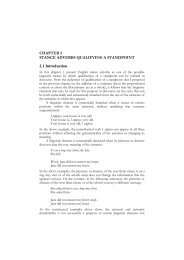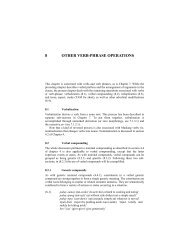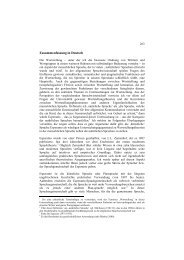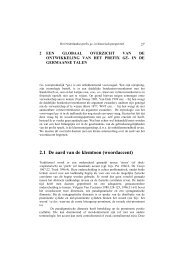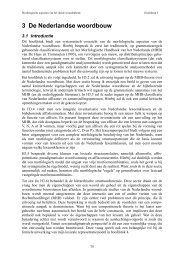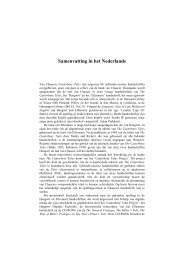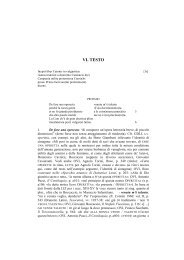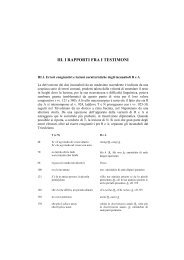Chapter 9 - LOT publications
Chapter 9 - LOT publications
Chapter 9 - LOT publications
You also want an ePaper? Increase the reach of your titles
YUMPU automatically turns print PDFs into web optimized ePapers that Google loves.
Accounts of SLI in Afrikaans<br />
Complexity Hypothesis), first proposed in 1994, as an attempt to keep<br />
abreast with developments in Minimalist syntax. However, Van der Lely<br />
seems to adopt a rather eclectic approach when deciding which<br />
principles of Minimalist syntax to incorporate into the RDDR. For<br />
example, she provides the following explanation for the problems that<br />
children with SLI experience with the interpretation of (certain types of)<br />
passive constructions: “The SLI children seem to have a specific<br />
problem ... with the representation of the movement of the internal<br />
argument to the subject position where it receives case and its thematic<br />
role” (Van der Lely 1996:267-8). As regards case, one can argue that, in<br />
1996, Van der Lely was simply working within an older version of<br />
syntactic theory. For this reason, she refers to case as being assigned,<br />
rather than being checked, as has been proposed since Chomsky (1993).<br />
However, the same cannot be said of her statement that the internal<br />
argument moves in order to receive a thematic role: Since the earliest<br />
proposals presented within the principles and parameters approach, it<br />
has been assumed that arguments receive their thematic roles in the<br />
sentence positions in which they are initially generated, specifically<br />
before any movement operations are performed (Haegeman 1994:310;<br />
O’Grady 1997:289). Thus, the claim that arguments cannot receive<br />
certain thematic roles because they do not undergo movement, does not<br />
concur with assumptions about theta-role assignment in Minimalist<br />
syntax (nor with such assumptions in previous theories within the<br />
principles and parameters approach). On more than one occasion, Van<br />
der Lely states that the RDDR offers an explanation for the problems<br />
children with SLI experience with the interpretation of passive<br />
constructions (see, e.g., Van der Lely 1996:267, 2003:127, 2004). This<br />
statement, however, only holds true if one accepts a key assumption<br />
which is contrary to that of the syntactic framework in which she claims<br />
to work. If not, the RDDR does not fully explain the problems these<br />
children have with the interpretation of passive constructions.<br />
Furthermore, Van der Lely and Stollwerck (1997) claim that the RDDR<br />
can explain why children with SLI experience problems in understanding<br />
(non-)co-referential relationships. Typically, such children find it difficult<br />
to correctly interpret personal and reflexive pronouns in constructions<br />
where syntactic knowledge – and not (only) semantic clues or real-world<br />
knowledge – is required to determine the referents of such pronouns, as<br />
in Is Mowgli tickling him?, Baloo Bear says that Mowgli is tickling himself, and<br />
260




